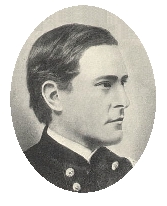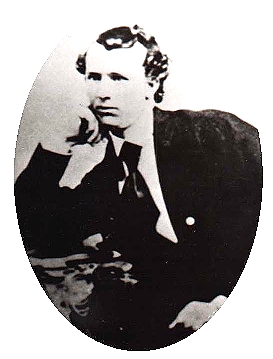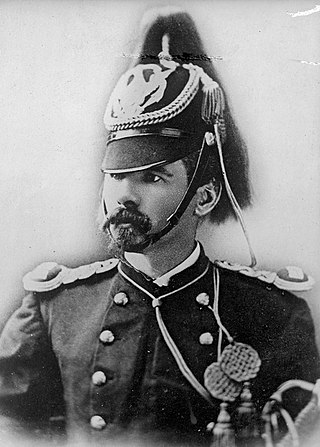
The Battle of the Little Bighorn, known to the Lakota and other Plains Indians as the Battle of the Greasy Grass, and commonly referred to as Custer's Last Stand, was an armed engagement between combined forces of the Lakota Sioux, Northern Cheyenne, and Arapaho tribes and the 7th Cavalry Regiment of the United States Army. The battle, which resulted in the defeat of U.S. forces, was the most significant action of the Great Sioux War of 1876. It took place on June 25–26, 1876, along the Little Bighorn River in the Crow Indian Reservation in southeastern Montana Territory.

George Armstrong Custer was a United States Army officer and cavalry commander in the American Civil War and the American Indian Wars.

The 7th Cavalry Regiment is a United States Army cavalry regiment formed in 1866. Its official nickname is "Garryowen", after the Irish air "Garryowen" that was adopted as its march tune. The regiment participated in some of the largest battles of the Indian Wars, including its famous defeat at the Battle of Little Bighorn, where its commander Lieutenant Colonel George A. Custer was killed.

Little Bighorn Battlefield National Monument preserves the site of the June 25 and 26, 1876, Battle of the Little Bighorn, near Crow Agency, Montana, in the United States. It also serves as a memorial to those who fought in the battle: George Armstrong Custer's 7th Cavalry and a combined Lakota-Northern Cheyenne and Arapaho force. Custer National Cemetery, on the battlefield, is part of the national monument. The site of a related military action led by Marcus Reno and Frederick Benteen is also part of the national monument, but is about 3 miles (4.83 km) southeast of the Little Bighorn battlefield.
Peter Thompson was a Scots-American soldier who was awarded a Medal of Honor for his actions at the Battle of the Little Bighorn.

Marcus Albert Reno was a United States career military officer who served in the American Civil War where he was a combatant in a number of major battles, and later under George Armstrong Custer in the Great Sioux War against the Lakota (Sioux) and Northern Cheyenne. Reno is most noted for his prominent role in the Battle of the Little Bighorn, where he did not support Custer's position on the battlefield, remaining instead in a defensive formation with his troops about 4 miles (6.4 km) away. This event has since been a longstanding subject of controversy regarding his command decisions in the course of one of the most infamous defeats in the history of the United States military.

Frederick William Benteen was a military officer who first fought during the American Civil War. He was appointed to commanding ranks during the Indian Campaigns and Great Sioux War against the Lakota and Northern Cheyenne. Benteen is best known for being in command of a battalion of the 7th U. S. Cavalry at the Battle of the Little Bighorn in late June, 1876.

Boston Custer was the youngest brother of U.S. Army Lt. Colonel George Armstrong Custer and two-time Medal of Honor recipient Captain Thomas Custer. He was killed at the Battle of the Little Bighorn along with his two brothers.

Myles Walter Keogh was an Irish soldier. He served in the armies of the Papal States during the war for Italian unification in 1860, and was recruited into the Union Army during the American Civil War, serving as a cavalry officer, particularly under Brig. Gen. John Buford during the Gettysburg Campaign and the three-day Battle of Gettysburg. After the war, Keogh remained in the regular United States Army as commander of I Troop of the 7th Cavalry Regiment under George Armstrong Custer during the Indian Wars, until he was killed along with Custer and all five of the companies directly under Custer's command at the Battle of the Little Bighorn in 1876.

James Calhoun was a soldier in the United States Army during the American Civil War and the Black Hills War. He was the brother-in-law of George Armstrong Custer and was killed along with Custer in the Battle of the Little Bighorn. His brother-in-law Myles Moylan survived the battle as part of the forces with Major Marcus Reno and Captain Frederick Benteen.

William Winer Cooke was a military officer in the United States Army during the American Civil War and the Black Hills War. He was the adjutant for George Armstrong Custer and was killed during the Battle of the Little Bighorn.
Henry Moore Harrington was a military officer in the 7th United States Cavalry Regiment who went missing in action during the Battle of Little Big Horn in Montana Territory.

James Ezekiel Porter was one of General Custer's eleven officers killed at the Battle of Little Bighorn, also known as Custer's Last Stand, and Porter was among the first verified casualties of the historic battle alerting the world to the demise of Custer's group. According to several historians, Porter led troops in a defensive action at the Little Bighorn. Porter also served in the American South during the Reconstruction Era, where, according to a comrade, he respectably served "Ku Klux" duty while the 7th Cavalry was charged with eradicating the Ku Klux Klan and illegal distilling.

Captain Thomas Benton Weir was an officer in the 7th Cavalry Regiment, notable for his participation in the Battle of the Little Bighorn, also known as Custer's Last Stand.
Neil Bancroft (1846–1901) was an American soldier in the U.S. Army who served with the 7th U.S. Cavalry during the Black Hills War. In 1878, he was one of 22 soldiers who received the Medal of Honor at the Battle of the Little Bighorn and who carried water "under a most galling fire" from the Little Bighorn River to the wounded soldiers on Reno Hill.

Private James Pym was a British-born soldier in the U.S. Army who served with the 7th U.S. Cavalry during the Great Sioux War of 1876-77. He was one of twenty-four men who received the Medal of Honor for gallantry, Pym being among those who volunteered to carry water from the Little Bighorn River to wounded soldiers on Reno Hill, at the Battle of the Little Bighorn on June 25, 1876.

Thomas Mower McDougall was an officer in the United States Army. The salient point in his military career occurred when he took part in the Battle of the Little Bighorn, surviving because he and his unit was not with George Armstrong Custer and the main body of the 7th Cavalry Regiment. Early on the day of battle, McDougall's Company B was assigned to escort the regiment's pack train, but the mules were not used to carrying packs and lagged far behind the other three detachments under Custer, Reno, and Benteen as they went into combat. After viewing the Indian village, and being surprised by its size, Custer sent two urgent orders to bring the mules with the ammunition packs to his detachment of five companies, but by the time these messengers reached Captain McDougall the distance between the pack train and Custer made this order difficult if not impossible to comply with, though a debate on this topic remains to this day.

Frank Finkel was an American who rose to prominence late in his life and after his death for his claims to being the only survivor of George Armstrong Custer's famed "Last Stand" at the Battle of the Little Bighorn on June 25, 1876. Historians disagree over whether Finkel's claim is accurate; although he provided several details that would only have been known by someone who was at Little Bighorn, there are inconsistencies in his accounts of events.

White Swan (c.1850—1904), or Mee-nah-tsee-us in the Crow language, was one of six Crow Scouts for George Armstrong Custer's 7th Cavalry Regiment during the 1876 campaign against the Sioux and Northern Cheyenne. At the Battle of the Little Bighorn in the Crow Indian Reservation, White Swan went with Major Reno's detachment, and fought alongside the soldiers at the south end of the village. Of the six Crow scouts at the Battle of the Little Bighorn, White Swan stands out because he aggressively sought combat with multiple Sioux and Cheyenne warriors, and he was the only Crow Scout to be wounded in action, suffering severe wounds to his hand/wrist and leg/foot. After being disabled by his wounds, he was taken to Reno's hill entrenchments by Half Yellow Face, the pipe-bearer (leader) of the Crow scouts, which no doubt saved his life.

Half Yellow Face was the leader of the six Crow Scouts for George Armstrong Custer's 7th Cavalry during the 1876 campaign against the Sioux and Northern Cheyenne. Half Yellow Face led the six Crow scouts as Custer advanced up the Rosebud valley and crossed the divide to the Little Bighorn valley, and then as Custer made the fateful decision to attack the large Sioux-Cheyenne camp which precipitated the Battle of the Little Bighorn on June 25, 1876. At this time, the other Crow Scouts witnessed a conversation between Custer and Half Yellow Face. Half Yellow Face made a statement to Custer that was poetically prophetic, at least for Custer: "You and I are going home today by a road we do not know".
















